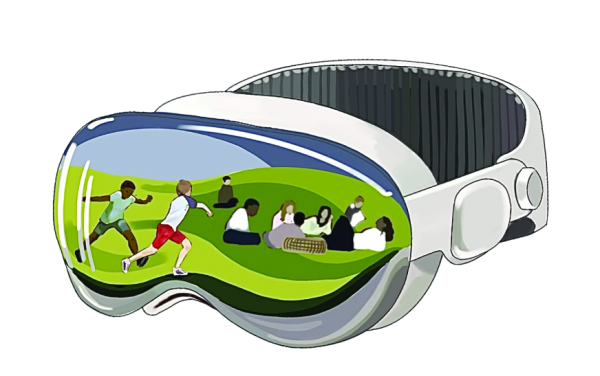In a world where self-worth is derived from likes and comments on Instagram posts and replies to Snapchat stories, teenage girls are extremely likely to fall prey to impossibly high standards set by celebrities’ social media accounts. Scrolling through the Instagram Explore page or TikTok’s “For You” Page may seem harmless, but seeing certain posts can pressure teens to look, act or dress a certain way to conform to unrealistic standards. Now more than ever, girls are at risk to the danger that lies in comparison culture––comparing and eventually altering themselves to resemble the oftentimes highly edited photos they see on their social feeds.
Although social media apps, specifically Instagram, allow users to be connected with friends and keep up with the latest trends, they can also be detrimental to teen girls as they strive to meet ever-changing beauty standards that represent society’s “perfect woman.” Modern-day representatives of these standards include the likes of internet celebrities. Kylie Jenner, Kaia Gerber and Madison Beer, whose photos look effortlessly perfect.
When Instagram users visit model Kendall Jenner’s profile, they see photos of her supermodel-tall figure with her toned abs and slim legs, large, pouty lips and flawless, glowing skin. Jenner’s younger sister, Kylie, displays a wildly different yet equally desirable body type in her posts: her shorter yet curvy hourglass figure highlights her wide hips, large breasts and unusually small waist. Both of these women have over 150 million followers on Instagram and both show off bodies that girls strive to attain by working out excessively, dieting and, in more severe cases, developing eating disorders. The Jenner sisters are just examples of the thousands of influencers who also promote harmful diet and weight loss products to their teen-dominated audiences, such as laxative diet teas, sweat-enhancing corsets and appetite suppressant lollipops.
As the years change, so do these nearly impossible beauty norms. In 2021, these trends include small, upturned noses, huge Bratz Doll-like lips, thick and arched eyebrows, long legs and curved figures with snatched waists. These standards have undoubtedly been set by social media posts and the rise of influencers whom girls see every single day on their feeds. We can’t help but compare ourselves to these women—many of whom ironically preach self-love—and feel inclined to change ourselves to look and act just like them.
Data from the American Society of Plastic Surgeons reveals that of over 1.8 million cosmetic surgeries performed in 2018, the top five were breast augmentation, liposuction, nose reshaping, eyelid surgery and tummy tuck. All of the surgeries listed perfectly match current ideals and the features they promote. Shockingly, over 19% of these surgeries were performed on females from ages 13 to 19. Beauty standards clearly correspond with plastic surgery trends in recent years as teens pay thousands of dollars to alter their appearances to look like their favorite celebrities and influencers because they don’t feel comfortable with their own looks.
Eating disorders are increasingly common in high schoolers nationwide, as the National Eating Disorder Association reported in 2019 that anorexia is the third most common chronic illness among adolescents, after asthma and obesity. Although obesity ranks higher than eating disorders, comparison culture is still an extremely concerning issue, as it is directly correlated with anorexia. The desire to be skinny is a disease plaguing young women and has landed hundreds of thousands of them in hospitals in need of recovery treatment.
As girls immerse themselves further into the deep, dark hole that is social media, they grow to dislike their appearances more, as they differ from the ideal looks created by public figures. Another way in which girls change their appearances to conform with society’s standards is by using apps such as FaceTune, which warp their bodies and faces. A study conducted by Grazia Magazine in 2020 revealed that 71% of women from ages 14 to 23 will not post an Instagram photo without editing their appearances. It is incredibly unfortunate that girls and young women feel the need to change so many of their features in order to feel confident about a photo of themselves, but they do so because of the unbelievably “flawless” women they see online.
As influencers continue to grow their fanbases, the likelihood of teenage girls comparing themselves to these perfectly posed women will increase dangerously. These internet celebrities need to tell the truth and clarify that their glamorized photos are not reality— the health and self-esteem of millions of young girls across the world depend on it.













































